#nintendo R&D1
Text
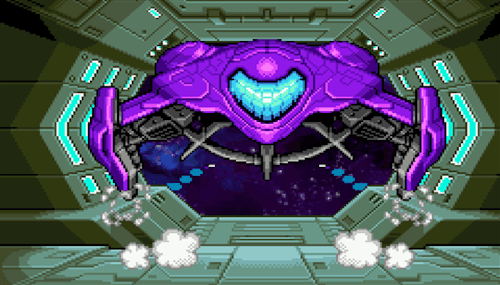

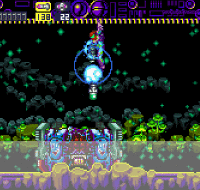

Metroid Fusion
Nintendo R&D1
Game Boy Advance
2002
336 notes
·
View notes
Text
[Review] Wario Land 4 (GBA)

A disappointing misstep... am I the only one who thinks this??
Despite coming so soon after Wario Land 3 (the fourth Wario Land game), Wario Land 4 (the fifth Wario Land game) makes a lot of changes. It tries to synthesise new ideas with the old and ends up feeling like a bit of a mess. It has a good reputation but honestly I don’t get it!

The first thing you notice is the visual refresh. We’re on the cusp of Warioware completely revolutionising Wario’s characterisation and setting, and WL4 gets a bit of a ripple from that. Wario is flexing and posing, driving a muscle car… read the manual though and it leans harder than ever into his hilariously gross habits and self-aggrandising mannerisms. Unlike a lot of other things in the game, this combination works well.

In a premise most reminiscent of Virtual Boy Wario Land, Wario is on the hunt for treasure and goes to explore an ancient ruin only to stumble on a series of wacky out-of-place environments contained within and a big weirdo out of nowhere as would-be antagonist. The use of magic portals does a little something for plausibility, I guess. Did Wario really need a princess to rescue though? Was that necessary? Shokora at least has a presence in the story thanks to her transformation into a mysterious cat who pops up in cutscenes / Mr. Game & Watch-style silhouette person who acts as shopkeeper.
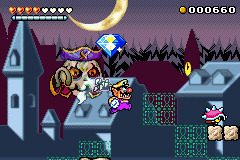
The levels feel initially like throwbacks to pre-3 style, with a critical path and side rooms, where it isn’t always clear which is which. But you do need to thoroughly explore because getting all four chests in each level is mandatory to unlock the zone bosses, plus there’s a key to find to advance to the next level. Having to redo entire levels if you miss any of these is a real drag. There's also optional mini-puzzle challenges sectioned off in their own rooms, removed from the flow and aesthetic of the rest of the level. But things change when you find the frog switch: a giant timer appears, and you have to backtrack to where you came in. Sometimes things change in the level, or you find a new path to return via, but often those progress items are hidden in this time-pressured sequence as well.
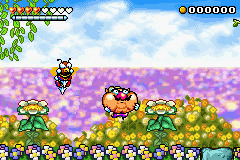
Far from being an exciting combination of ideas, I think these concepts of structure and design are at odds, pulling in different directions. Similarly, the non-damaging conditions from WL2 and 3 return here, but in a position of reduced prominence, and they've reinstated a health meter mechanic on top. (The GBA's shoulder buttons also prompted a return of the run button from VBWL, but it feels underused.) Removing the timer and health system was a breath of fresh air in WL2... now they're back, and for what!?
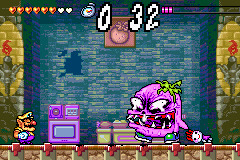
The boss battles are another miss for me. They're also timed, and you have to do them quick to get maximum treasure, which is otherwise kind of a non-factor. Collecting coins in levels lets you play one of three minigames (none of which are very fun) to earn tokens. You can spend these in a shop before the boss door, for a variety of effects that simply remove health from the boss. This Breath of the Wild-style "reward" of making the fights shorter by just subtracting from their health bar is such an odd choice to me. The fights themselves are fine at best, but the bosses are visually overdesigned in a purposeful, grotesque way; I suppose it's meant to be amusingly absurd but I just found them ugly eyesores.
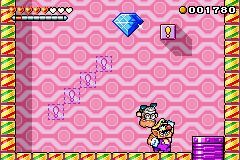
Playing the Wario Land games one by one, I've enjoyed seeing them refine the concept and bring in fresh ideas. WL4 on the other hand feels like it's trying to force ideas in and fumbling in the process, with a result that doesn't quite come together. Even though the play control is tighter and snappier, the game is less than the sum of its parts, less pure than previous Wario Lands. The music is really strange too, trying for some kind of esoteric wackiness but maybe trying too hard... The series has never looked better, but this might be a sign that it's losing its direction. Meanwhile Nintendo R&D1 themselves are soon to be restructured, splintering into oversight roles and smaller teams, and I think the "Wario platformer" series suffers as a consequence, while Warioware's star rises. We'll see in the next few reviews I suppose...
7 notes
·
View notes
Text

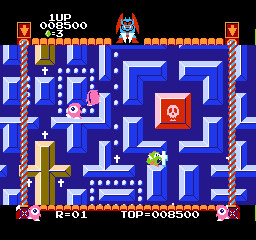
Devil World (Famicom)
Developed/Published by: Nintendo R&D1, Intelligent Systems / Nintendo
Released: 05/10/1984
Completed: 18/01/2024
Completion: Saw all the levels (there’s only three.)
I’m not sure I can think of a company as venerated as Nintendo. A company that’s ultimately considered peerless–a promise of reliability, of quality, but with a mystique that somehow makes it all impossible to duplicate. While it’s made mistakes, they’ve always been mistakes that only Nintendo could have made. We might buy Apple products, or use Google, but even if we liked what they did at one point, we’re by now tired of the greed, the privacy violations, the churn of samey products, the enshittification. It’s hard to tell anyone apart. But not Nintendo. They stand alone.
Which I suppose is why it’s nice to go back and play these old games and see that just like everyone else Nintendo basically has no idea what they’re fucking doing. I mean, this. Devil World. Made with the gay abandon that only Asian developers can have about western religious iconography, it takes Pac-Man (sort of, more on that in a minute) and throws in random auto-scrolling and the need to collect crosses and bibles to survive while the devil dances at the top of the screen like he's in Haxan. It’s textbook weird and I’m sure it’s been in all sorts of Angry Video Game Nerd or Seanbaby-type videos but I’m not looking them up and neither should you.
There’s two things that are crazy about this. One, it’s that it’s apparently the first Famicom game that Shigeru Miyamoto directed. It’s a pretty early original title for the system (outside of sports titles) and it strikes me to what extent that even after Donkey Kong Miyamoto was still finding his feet as a designer. In fact, as I subscribe to the theory that Super Mario Bros. is more heavily based on Pac-Land than Miyamoto might admit (“sky colour” my arse) I wonder how much Donkey Kong was inspired by Space Panic, the proto-platformer, and Miyamoto simply “hit” on the tweaks that would make it eternal as he would do with Pac-Land. Here… he is not successful. In fact, the concept just feels sort of… unfinished. Half-arsed.
To put it in more detail: On the first stage of Devil World, you are navigating a fairly small wrap-around maze (a la Flicky) but one that moves in a random* cardinal direction for a random* amount of time, meaning you can get squished between walls and the edge of the screen. There are monsters that move around the maze (but who don’t seem especially bothered about chasing you, at least to begin with) who kill you on touch, but you can kill those by collecting a cross and firing a fireball at them. The cross, also, is the only way to collect the dots around the maze. It runs out after a set amount of time and then you have to collect another (though there’s a bunch around the level, and they don’t run out.)
*There may be some system to this, but I never worked it out.
On the second stage, you’re still avoiding the monsters and trying not to get squished, but you’re collecting four bibles and taking them back to the central “seal” (think the central ghost box from Pac-Man) to get to the next level.
The third stage is a bonus level with no enemies where you’re trying to collect six bonus boxes before time is up. The level is still scrolling randomly, but there’s some arrows in the level that… allow you to move the direction? Maybe?
Ultimately… none of this works. The random level movement and wall squishes feel, well, random. Having to collect the cross to pick up dots feels arbitrary, and the bible collection is sort of… pointlessly easy? And it’s all rather slow and unresponsive.
It’s possible that these were Miyamoto’s attempts to “level-up” the maze chase game the way adding jumping created the platformer and then when it didn’t work, well… the game had to come out. But maybe it’s also the fault of the second crazy thing about Devil World. Rather absurdly the game’s other designer, Takashi Tezuka, had never heard of Pac-Man. Doesn’t seem like the best foot to get off on when you’re, you know… cloning Pac-Man, to be honest.
Devil World is one of those examples of a game where some people tried something to make something already good better, and everything they did made it significantly worse. Wait… they enshittified Pac-Man… Nintendo aren’t different at all!!!!
Will I ever play it again? It simply isn’t worth the time.
Final Thought: I was honestly very surprised to discover that this was actually released in Europe in mid-1987 despite being not released in the US due to the ol’ religious iconography. Rough for the weans who got a copy of this that late in the game.
Support Every Game I’ve Finished on ko-fi! You can pick up a digital copy of exp. 2600, a zine featuring all-exclusive writing at my shop, or join as a supporter at just $1 a month and get articles like this a week early.
#video games#gaming#games#txt#text#review#nintendo#nintendo switch#famicom#devil world#nintendo r&d1#nes#intelligent systems#1984
3 notes
·
View notes
Photo

"The Hall of Armor" - Metroid Zero Mission
17 notes
·
View notes
Text
It's really sorta crazy to me that Splatoon is a core nintendo game, not just a core nintendo game, but a game by EAD, the core nintendo team. It feels more like it should come from R&D1's weirdness, or a second party studio like Retro, Hal, or the Rareware of old. But no, this alternative, very gay, online shooter, about squids in the post apocalypse is made by the same team that makes Mario.
2 notes
·
View notes
Text
The Free Cheese Episode 546: WarioWare, Inc.: Mega Microgames!
This week on The Free Cheese, play some games, dork!
We join the WarioWare corporation five seconds at a time, punching, mashing, picking, and jumping all the way to the top. In this episode, we break down the essence of what makes WarioWare so intriguing and easy to learn. We look at how the game is able to satisfy each element of playing a video game and see where it ranks against other…

View On WordPress
#game boy advance#microgames#mini games#Nintendo r&d1#rhythm heaven#wario#warioware#warioware inc.#yoshio sakamoto
0 notes
Text
maybe this makes me annoying to a degree but i absolutely believe video games need to have some Auteurship to them. you need to have a guy who has an insane and weird vision somewhere along the way or otherwise you end up with slop. it doesn't have to be about story necessarily- you could want a distinct visual style (many, many examples), a place to put your insane music you've composed (touhou, undertale, among others), or a particularly unique type of gameplay (kaga saga, celeste, etc.) but you have to have 1 or 2 extremely weird guys with Ideas.
this doesn't NECESSARILY make your game good, but it's a requirement for it to rise above mediocrity. actually, let's take a concrete example!
metroid is an interesting video game series. it's famous for a lot of things- going around places collecting items that unlock new areas, the way it encourages fast play, having an interesting setting and kickass female protagonist in an era where the latter was very uncommon.
its development teams- one r&d team within nintendo, and one subcontracted outside company- were, at the time, primarily known for ports of arcade games and some sports games. a small subteam within the r&d team, however, were the Idea Guys- they came up with character, script, and world designs even when other games of the time were not even thinking of the concept of games being IN a world. thanks to them, a great number of nintendo games that would have been, well, just "games" like mario ended up being beloved for their characters and worlds (metroid, of course, but kid icarus and others, too.)
anyway, nintendo r&d1 and intelligent systems later became known for being at the forefront of story-driven and otherwise unique first/second party nintendo games, as i'm sure you know by now if you've heard of them. all it takes is a bunch of weird guys! otherwise you end up like the poor duck hunt dog or the ice climbers- revolutionary in their time, but who wants a new duck hunt or ice climbers game?
i feel that many AAA games of the modern era are falling into that same trap of "being a good game" while not realizing that being a "good game" with all the latest features and being a game that people will remember and continue to give you goodwill for making are very different things. what's old is new again.
211 notes
·
View notes
Text
The Lingering Will of Wario Land
Wario has always been the most unhinged of Nintendo's characters. While Mario is sane and safe and usually pushes the envelope in practical ways, Wario is sporadic and insensitive and breaks the mold by taking as many left turns as possible. Wario used to be a testing ground for Nintendo R&D1's weirdest ideas. And to this day, he still kind of is. Though that studio doesn't really exist anymore, Nintendo is still making Wario Ware games and the will of that studio carries on. As far as I can tell, Intelligent Systems is carrying on the torch quite well. But while Wario Ware acts as sort of a repository of varied minigames, it's not reminiscent of the larger scale ideas the studio used to execute on. And before Wario Ware, most of that was done within the Wario Land series. The series that I'm actually a fan of. And I've always wondered what kind of games we'd have if the will of that series was passed down. Over the year I've come to realize that it basically has.
The thing about the Wario Land games is that, while they are all at their core side scrolling platformers, they all have gimmicks and structures that dramatically differentiate them. Most games after the first feel like a full metamorphosis rather than a traditional sequel. Wario Land evolves in a collection of branching paths, and I'm interested to see where those paths end. I won't fully know because I can't possibly play every game that has Wario games as an influence, but I can definitely make a few decent observations and unabashedly glaze Pizza Tower before the end of this write up.
The first Wario Land was made as a sequel to Super Mario Land 2, thus is the installment with the most similarity to Mario. Wario functions the same as Mario in that you get a variety of power ups that vanish upon taking a hit. It has linear levels that are full of secrets. It has a cute world map to select a level. It's all very reminiscent of its predecessor, but stands apart in one aspect. The move set. All Mario can really do is run and jump at the end of the day. Sure he can get power ups that give him more options, but you can only rely on jumping when the chips are down. Wario has a bit more leeway. Even at his smallest form, Wario can tip over enemies, throw them as well. Mario can technically do this too, but it's more situational as only certain enemies can be chucked, such as koopas. Wario Land is designed around being able to do these things whenever you want and it led to a bit more puzzles oreinted. You weren't just killing enemies, you were bullying them. Using them to fulfill your goals by displacing them where they best suited you. It's a move set that fit Wario’s personality. And when you get the super onion and become Super Wario, that bully energy multiplies tenfold. The shoulder bash is THE Wario move. Haphazardly thrusting the side of your body into someone way weaker than you is something you would never see Mario do. But when I think of Wario, I think of the shoulder bash. It's his signature move, his Kamehameha. Wario honestly feels weird without one, which is why being tiny Wario kinda blows. Its a part of Wario I never want to see removed.
The next Wario Land released after the first was Virtual Boy Wario Land. It is, by all means, a natural sequel to the first. The game play is fine tuned a bit to make Wario faster and snappier, but for the most part is the same. The power ups are the same, the move set is the same, the treasure hunting aspect is the same. The main difference is the level design. Virtual Boy Wario Land takes advantage of the stronger hardware of the Virtual Boy console and uses it to make layered level design. In both boss fights and stages you are swapping between the fore ground and background of the stage, which is only possible due to the depth added by virtual boy. While Virtual Boy Wario Land had less levels than the first, it also had far more inventive levels. You don't really see level design like that in future games. Virtual Wario Land’s influence is felt more outside the franchise. The DNA of it can be found in most 2.5D platformers and every 2D platformer with layered level design. Shantae, Klonoa, Mutant Mudds, Donkey Kong, Kirby, andMario all end up using design techniques created by this obscure follow up. Despite being a by the books sequel in a lot of ways, it was still a very impactful game.
What was not by the numbers was Wario Land 2. That game was a true evolution. The things that separate Wario from Mario in the first game were the actions Wario could do. Virtual Boy Wario Land focused on level design, but that was a very Mario approach in all honestly. Wario is not about improving his environment, he's about improving himself. And this isn't to say the level design isn't an improvement, it just shapes itself around all the new things you can do. Wario Land 2 does a few things to dramatically enhance the power fantasy of playing as Wario. The first is an expansion of actions Wario can do. This guy can ground pound and shoulder bash in his base form. He can execute a rolling attack from a slope, he can aim his throws. Wario has a ton of verbs at his disposal this time around and the levels make sure to take advantage of them. Wario now feels stronger because he can do more things with zero cost. He also feels stronger because he’s an immortal demigod-like being.
The worst moments in Wario Land and Virtual Boy Wario Land is where you aren't Super Wario and feel virtually powerless. In Wario Land 2, you are always super and thus never die. You lose coins when you get hit. This shifts the focus away from completing a level without dying and instead completing a level with as much money as possible. The stages being designed with Wario’s immortality in mind allows for more treacherous and ambitious level ideas due the penalty of failure being so low. The most inventive way they handle Wario’s insane durability is turning would be obstacles into temporary transformations. Things that would have killed you in past games now only mold you into something different. Getting bit by a bat turns you into a vampire, getting flattened allows you to slip under crevices. Most of the puzzles in these games had Wario use enemies as projectiles to achieve some kind of solution. Now Wario is using enemies to intentionally get tagged by them for the same purpose. It's a far more unique approach to power ups, while also making Wario simultaneously more pathetic and more frightening.
Wario Land 2 is a complete shift from its predecessors, and while a lot of its ideas are used in future games, nothing in the franchise matches it in terms of encouraging collection above all else. Not a lot of games in this genre are willing to not kill you as a penalty to fucking up. One of the few that is is Kirby’s Epic Yarn, which I feel is the game most similar to Wario Land 2 in spirit. Getting loot IS the difficulty in that game. Stages are stuffed with secrets. You can't die, but you lose money on hit. Every other level is filled with a variety of transformations which contort your body in a visually interesting way. It feels like a lot of inspiration was taken from Wario Land 2.
Wario Land 3 takes the gameplay of Wario Land 2 and reframes it in its own unique way. You have the same move set, but most of these abilities you have to unlock, and then you use these abilities to open new routes in past levels. Structurally it's closer to a Search Action games than a standard platformer. Levels act as sections of a world that you explore and the world map is how you travel between them. Treasures you find in each level can either give you an ability to access new areas of a level, change the physiology of a level so that new secrets are revealed, or unlock new levels entirely. Every objective you complete builds towards revealing more of the game in an outward direction. The amount of backtracking you do in this game exceeds basically every Metroidvania I've played. To the point in which I think it ruins the game and makes it bad.
I'm glad they didn't make another Wario Land game like this. Not because its ideas can't be implemented well. We see this level based search action approach in other games such as Castlevania: Order of Ecclesia and Shantae: The Pirates Curse, but they execute it in a way that doesn't put a damper on exploration. They limit the number of areas and make back tracking for areas only required once or twice at most. The needless complexity is dialed down, so that retracing your steps doesn't lose its flavor. It can be done well, I simply like Wario Land 4 and wouldn't sacrifice it for a good version of Wario Land 3 under any circumstance.
Wario Land 4 is the pinnacle of the franchise. Virtual Boy Wario Land added tighter more creative level design. Wario Land 2 added more movement. Wario Land 3 added ways to experience levels multiple times in different ways. 4 takes all of these concepts to the next level. It has fewer levels than the past two games, but these levels are the most visually distinct and mechanically diverse ones so far. While there’s no central gimmick being utilized like in Virtual Boy Wario Land, each level has its own central gimmick that the level is built around rather than serving only as a motif. In addition to the levels being better than ever, the bosses are good for the first time in the series. They were fine in Wario Land 1 and Virtual Boy Wario Land, but weren't amazing. The quality of boss fights is tarnished in Wario land 2 and 3 because you don’t take damage in those games. You basically have to do every fight perfectly or restart the whole encounter as that's only penalty that can be enforced. Wario Land 4 has removed his invincibility. He instead now has a large health bar. You will basically never die in a level because of how many hits you can take and how easy it is to heal so you still feel invincible. However, you are still in danger during boss fights. Because you can take hits, you aren't required to do the fight perfectly. Instead now the boss fights are more complex and you are encouraged to do them perfectly as the faster you complete them, the more rewards you get.
Movement has always been a focus in the Wario Land series. 3 didn't add much in that department but 4 picks up the slack by adding a single move. Wario Land got pretty far move wise using only 2 buttons and a d-pad. Now with shoulder buttons in tow, Wario has learned a game changing ability. Running. The charging run is a brilliant addition to Wario’s move set. It's not only a method to go faster, it's a state which you need to maintain. Most levels are designed to be potentially charged through while stopping very little. You can become a blitzing mad man that tramples all in your path, so long as you don't run into any walls and obvious obstacles.
The charge isn't just a faster way to move around or a fun way to implement more puzzles. It's integral to the game’s defining feature. Wario Land 3 wants the player to re-experience a level by playing it again with different parts unlocked. Wario Land 4 takes a different approach by locking the player in the level and moving the exit to the entrance. You have to play every level backwards and you have to do it under a timer. Each level ends in an exhilarating Metroid escape sequence where you use your knowledge of the level coming in to aid you in getting out. And using the run really helps get you back to the entrance in time. Wario Land 4 is the best of the franchise because it excels at everything the franchise has become known for while simultaneously being so different from the others.
There is one more Wario Game made after 4 though. Wario Land Shake It, interestingly enough developed by Good Feel, the creators behind Kirby epic yarn. Shake It is a fine game, but doesn't take anything 4 does in a good direction. 4 had this nice flow to it when you knew what you were doing, but Shake It has its pace bogged down by bad motion controls that require you to tilt your controller slowly or shake objects for too long a time. The run is also removed as a normal action because the number of buttons is back to the old days. Instead there are dash pads which you are given a designated dash upon using. This isn't too big of a deal as there are some good puzzle created from this approach, though I still prefer it being a normal action. The main move set drop that bothers me is the lack of transformations you get as a result of an enemy or obstacle. It has been a mainstay since 2 and now there are only 3 of them and they all function pretty similarly. Shake It has pretty good level design and is the best looking Wii game, no joke. But it's a huge step back from 4 in a lot of ways and I can't call it a proper successor. It wasn't what I wanted out of a Wario Land 5. It didn't add enough and left behind too much. And since playing it, I’ve always wanted a game that expands on Wario Land 4 to a degree that could consider it Wario Land 5.
Enter Pizza Tower. The fully evolved form of Wario Land 4 and maybe Wario Land in general. It's an indie game that understands the franchise it's inspired by, knows exactly what makes the game it takes the most from special, and knows exactly what elements to add to bring out the best in itself. I touched upon earlier about the things that make Wario Wario. I believe these things are Movement, Character, and Exploration, all three which Pizza Tower excels at. It's not Wario, it has a different flavor for sure, but the soul of Wario Land resides within it.
Peppino, the main character of Pizza Tower, can do nearly everything Wario can do. He can ram into enemies, he can hurdle forward at the speed of a car. He a can chuck anything he can carry to the other side of the screen. He can roll down slopes like Sonic the Hedgehog. He can slam his ass through concrete. He's also functionally invincible, so obstacles and enemies can grant him transformations the same way. The only thing he can't really do is charge his throw in a diagonal direction. It's a shame, but that's too slow of an action got Pizza Tower.
Every thing you see in Wario Land you will see in Pizza Tower, but reflavoured to be goofier and more frantic. It takes the emphasis on speed from Wario Land 4 and takes it to its logical conclusion. The format is basically the same, but the rush to the exit of the level is far more exhilarating due to the deluxe suite of moves Peppino has at his disposal. Pizza Tower is meant to be played fast and thus takes inspiration from games also meant to be played fast. Mainly Sonic and Metroid. The speed at which you move with and the momentum you carry between actions is every bit as speedy and gratifying as a Sonic game. There are even different states of velocity like there are in Sonic Advance 2. The dash button works sort of like the one in Sonic Lost World. It changes your state of movement so that you not only move faster, but interact with your environment differently. A crouching attack while dashing is different from when not. You can even climb walls much like how parkour works in that game. It proves that Lost World isn't fundamentally bad, it is just made incorrectly. Once you get the hang of switching between running and sprinting the flow of the game really opens up.
The maintaining of speed feels very Sonic like, but the control of it feels very Metroid. Once moving at top speed you can store your speed and release it upwards, much like using speed boosters and shine sparks. You can also redirect your velocity by making sharp turns on surfaces similar to how you’d be expected to control your shine spark through winding paths. The breakable walls you'd find in Wario are used to obscure routes that would house a faster and more point filled path back to the entrance. This perfectly emulates the feeling of scrambling back to your ship at the end of the game, but not taking the most efficient path. It's not that these elements weren't somewhat present in Wario Land 4, but they are far more pronounced in Pizza Tower.
There are also plenty of verbs that are entirely unique to him such as Multi Directional Air Dash, Pile Drive and the most important out of any of them Taunt Parry. The parry isn't required for completion of the game. You probably don't even need it to get a high score. But the action itself is integral to the flow of the game. You move at break neck speeds here. Sometimes you will be barreling towards something you cannot get out of the way of and it will kill your pace when you face plant into it. Unless you parry. Then you can keep going. The parry acts as an emergency bitch don't kill my vibe button. It doesn't grind the flow of the game to a screeching halt, it keeps you going. It's similar to the parry in Metroid Dread, but I'm not confident that is an inspiration.
I haven't even touched all the actions Peppino can do. Some of them don't even register as individual moves because they feel so natural. Many actions in Pizza Tower are context sensitive. But they aren't the annoying type of context sensitive where things get in the way of each other. There were times in Pizza Tower where I wasn't really thinking, just letting the game guide me, and I was shocked at how many actions I was doing despite not quite understanding how I was consistently doing them. Everything makes sense. We've come such a long way from Wario picking up an enemy he bumped into it while in a vulnerable state. Pizza Tower is hands down one of the best feeling games I've played and that is far from its only strength.
Wario Land games have a unique charm that's not emulated by Pizza Tower. They aren't merely vehicles for fun gameplay ideas, they are playgrounds exercising whatever sense of humor the developers have. Earthworm Jim and Rayman fall under this category. They aren't just about making sure you have fun playing, but also laugh while doing so. They achieve this by having a larger than life main character traverse a surreal world. Wario was this weird greedy goblin man who had impossible physiology which allowed him to be an excellent target of slapstick. He was gross. But he had this confidence to him that made him easy to root for. He did what he wanted because he wanted to and nothing else. He's as aspirational as he is despicable.
Peppino is not Wario. Peppino is almost the opposite of Wario. Which you would think makes him Mario, but you'd be wrong. Peppino is not someone you wish you were on some level. Because he already is you. He is concentrated anxiety molded into a humanoid shape. He is a man at the end of his fucking rope. He does not want to be here, but he has to be here to protect what is his. Wario was a power fantasy, but Peppino is an abstraction of reality. He's the lower class citizen who constantly gets dunked on by society, but always gets back up. That's where his invincibility comes from. Not unshakable confidence, but the primal drive to survive.
Peppino is a character I love seeing on screen at all times and him interacting with the ridiculous setting of Pizza Tower. Every level in Pizza Tower is based off some corny themed pizza restaurant which makes each level not only have unique mechanics for those levels, but a motif that is pushed to its comedic potential. The commitment to the bit is where Pizza Tower excels. An urban themed pizza restaurant where you travel between levels in taxis and the cops are literally pigs is some inspired shit I'd be proud to think of. Keep in mind, this a normal, run of the mill idea this game has. Pizza Tower exist within an infinite void of transcendental japes. I notice something silly about it every time I replay a level.
What elevates the charm of Pizza Tower is the art style and animation. The spirit of every Newgrounds animation made in 2007 dwells within this game. It's purposefully amateurish and skillfully expressive. Every sprite looks like it was made in MS paint using a track pad and they probably are. The simplicity of the images allows for more aggressive drafting, bolder colors, and a higher quantity and quality of animation, because being on model and having detailed images is never a priority. The visual volume of Pizza Tower is off the charts. Peppino himself has enough animations with manic energy expanding in all direction that he alone could carry the whole game. But every character and environment is handled with care.
The level design is one of Pizza Tower’s strongest aspects. It exemplifies Wario level design by having a high saturation of secrets with collectibles both major and minor. Like in Wario Land 4, Looting is required, but you don't need 100% of it to progress. It's much more like a 3D Mario game where you need a set amount of collectibles total to pass gates in the game. This pushes exploration without aggressively forcing it. But just because it's not extremely required, doesn't mean intimacy with the levels isn't an important aspect of the game. In fact I’d say it's more important than in any game it's inspired by.
I would describe the levels in Wario Land 4 as ones that follow the classic 3 act structure that most things can be divided into. The first act is the beginning of the level where you are introduced to the mechanics. The second act is where the twist on the mechanics occur. And the third is where you speed back to the entrance and experience the first two acts in reverse. Pizza Tower follows suit, and the split between acts is even more pronounced with the change in music. But Pizza Tower takes it further with a bonus act. A hidden act 4 where you play through act 3 again, but on a tighter time frame. In order to succeed in this act 4, you have to explore the level before hand and know all the best routes to get to the entrance as soon as possible.
Each Wario Game always adds something new to the table to shake up the formula which is what I felt was lacking from Wario Land Shake it ironically. I'm not gonna outright call Pizza Tower Wario Land 5, but it does add something to the Wario paradigm that was never prioritized, but feels natural. It adds a mastery incentive. Pizza Tower wants you to be good at this game. That's why these second laps were implemented. What better way to show you know a level like the back of your hand than playing it again in less than half the expected time?
Scoring points in this game is determined mainly by two things, your combo and the things you collect. Your combo is the streak of enemies you've defeated in quick succession. It's actually pretty lenient in how long you can go without your combo resetting. And because of this leniency, the game can impose unrealistic task for you to complete in order to get the highest rank such as Combo the entire Level. It’s tough, but surprisingly doable. That's not enough though, as you are expected to collect ingredients throughout the stage and complete hidden bonus challenges in order to meet your score quota. In Wario Games, it was fun to collect things, but it never amounted to much because you could only spend money on mini games. Pizza Tower doesn't pretend to have an economy, so it instead focuses most of the collection criteria into determining your score.
Comboing the level will boost your score, collecting all major collectibles and completing hidden missions will boost your score. But you won't get the highest rank until you go for that second lap and risk it all. It turns out Sonic isn't the only Sega property acting as potential inspiration. This second lap idea is taken straight out of Nights into Dreams. Nights is a game with circular level design that wants the player to gather as many points as possible in as quick of a lap as possible. The best part of the entire game is that feeling you get when you look at the time left, see your current score is enough and decide in the heat of the moment: “ehh I got time, I'll do another one”. It's a philosophy of mastery I haven't seen in any game since, not even the sequel to that game. But Pizza Tower once again delivers. Sure you can only do 2 laps max, but the feeling of getting away with an extra run that seems like you’re not allowed to do is still there. And when it all comes together and you get that coveted P rank, it's unmistakable. This is gaming right here.
The ingredients of this game are all of the highest quality. The design, the personality, the execution is all there. Even the toppings are mind blowing. What really separates Pizza Tower from Wario Land is that all the boss fights are incredible and are just as good as the levels despite the game not being built around them in the same way. Wario boss fights weren't good until 4 and even then they only barely qualified. The bosses in this game are a genuine highlight for me which I'm not used to for platformers in general. They didn't have to go this hard, and on top of every positive thing I listed about Pizza Tower, it is all sprinkled with the best soundtrack of the year. I have been listening to this soundtrack nearly every week since April 2023. It is absolutely godlike. I genuinely put the final boss music on the same level of respect as Dancing Mad from Final Fantasy 4. Every track fills me with energy. Everything in this game revitalizes me. It is the most video game I've played in a while. It might not be huge in terms of portion size, but I'll always comeback for seconds. I can eat it all day, you know...like Pizza.
I'm glad that the legacy of Wario Land 4 has led to a game like this. But I'm even happier that this isn't the end. Its will was carried in multiple areas. I haven’t touched Anton Blast enough to speak in depth on it, but it seems to be evolving Wario Land 4 in an entire different way than Pizza Tower. There seems to be more Wario 4 like games that popping up recently. And I'm thrilled. Over the years I've lamented about dying franchises or franchises that have moved in a direction I'm not fond of. I want these things to exist, but I certainly don't have time or ability to make them myself at this point in my life so I get bummed out. But seeing how there hasn't been a Wario Land game in almost 20 years, but the franchise still basically persist anyway gives me a comforting hope. A hope that the things I love will never truly fade away. That their will, shall forever linger.

6 notes
·
View notes
Text
[turns on Sentai after a week of meandering through the mind haze] it's flashman episode 11's intro out of context.


I cannot explain with still images how abruptly the monster babysitting the egg has it roll to his left, whereupon the second it leaves the screen the show cuts to him on the edge of this cliff.




the egg rolls into the road, and our alien biker heroine raises her visor in time to get into a wreck. I choose to believe that she's still not used to the earth custom of using protective gear correctly. She didn't know what a balloon was until around two episodes ago and dresses like this pretty much all the time.
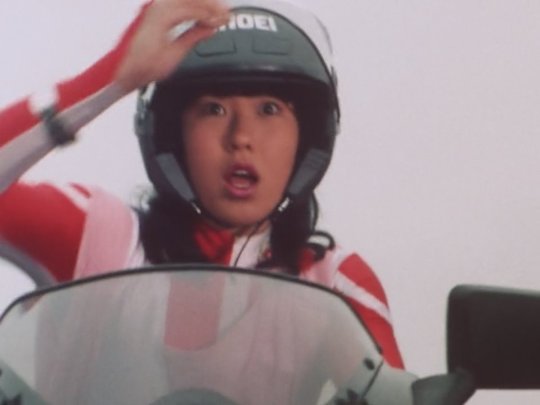
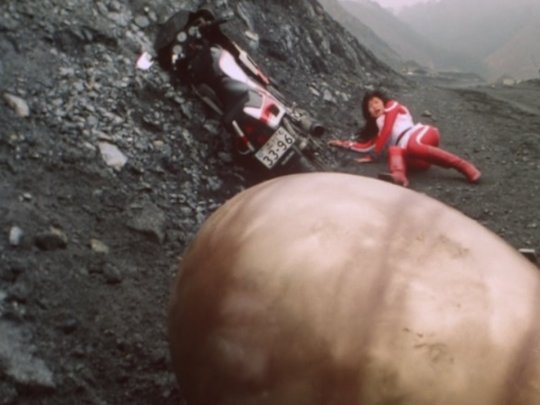
[baby monster imprint time, Nintendo R&D1 begins taking notes]


I have about 150 screenshots of the 10 episodes before this. we're so back.
#are there 4 other samuses out there...Chozo Red...does she have friends#tokuposting#toku#choushinsei flashman#flashman
4 notes
·
View notes
Photo

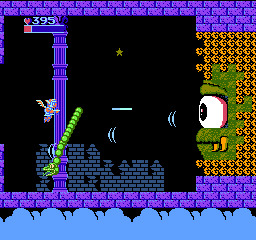

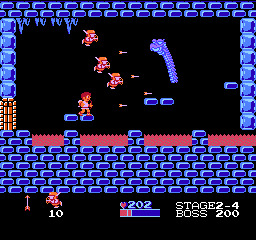
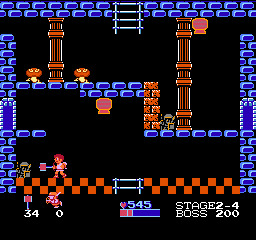

Kid Icarus (NES - Nintendo R&D1 - 1986)
99 notes
·
View notes
Photo
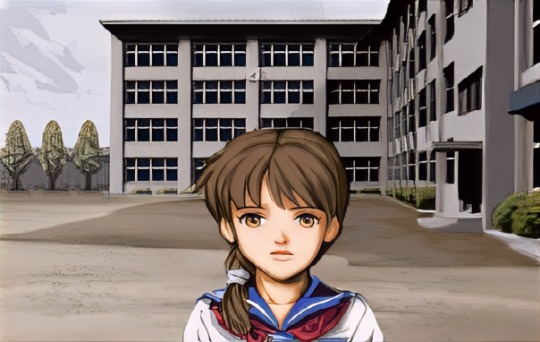

Famicom Tantei Club Part II: Ushiro ni Tatsu Shoujo
©️ TOSE Co., Ltd / Nintendo R&D1 1989
Image sourced from giantbomb.com
Minor cleanup on face.
19 notes
·
View notes
Text

Super Metroid
#super metroid#nintendo R&D1#nintendo#super nintendo#super famicom#super NES#SNES#samus aran#metroid#1994
245 notes
·
View notes
Text
[Review] Wario Land 3 (GBC)
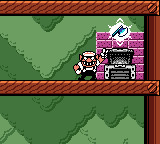
A return to a childhood favourite.
Although I played this game to death growing up, I wanted to revisit it during this Wario Land series playthrough, to see if it holds up. Short answer: it does! Long answer:...
WL3 is very much standing on the shoulders of Wario Land 2. Most of the mechanics are straight up reused, including the exploratory focus and the various zany conditions that can empower or bother the invincible Wario. The enemy cast is completely new, owing to the new setting inside a magical music box, but many of their interactions with Wario are familiar, plus a bunch of new ones have been added like vampire mode, invisible mode, or wrapped-in-a-ball-of-string mode.

The sprites from Wario's forms to the enemy cast are all delightfully expressive, and make better use of the colour palettes, this now being a native GBC game. But I must admit that after two games with Captain Syrup and her crew, that I missed her as a villain; Rudy the evil clown is not only supremely ugly and an unsatisfying twist villain, but his boss fight is kind of bland as well. Oh well, you can't win them all.

Building on the puzzley interactivity that WL2 laid down, the dev team seem to have brought an infusion of Metroid DNA over to WL3. While there are still discrete stages (and the return of the world map), Wario unlocks new abilities over the course of the game through certain treasures, and others will open new paths in previous levels. In fact, each stage must be visited at least four times to discover new bite-size challenge rooms and find more stuff to unlock more paths and so on. The options can feel overwhelming, but twinkles on the map screen can clue you in to where changes have occurred, and the helpful cave god (who is not at all a baddy that is tricking Wario) will always give you a hot tip for which level to choose for optimal progress. Overall I think this game structure works really well; while a bit experimental, it's also a natural evolution of Wario Land design principles and Metroid cross-pollination.

Combining WL2 mechanics with a more robust version of WL1's underused world-changing system makes WL3 in some ways feel like the ultimate Wario game... except for a reduced focus on coins. You still pick them up, but rewarding you with rooms full of shiny gold has been replaced with more practical keys and chests for unique treasure, and the optional music coins; both these and ordinary coins lead into an inevitable examination of the golf minigame.
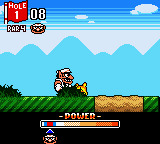
The series has always incorporated minigames, which spins off into the excellent Warioware subseries. Examples within the Wario Land games themselves have always been a bit lacking. The golf minigame here, while admittedly decent and the best yet, is a little overplayed. (By the way, it's actually Wario kicking a little mook enemy rather than clubs and balls.) It's a mandatory task for some treasures, and is the only purpose for money which otherwise caps at a measly 999. An optional, longer version can be expanded with new courses by finding all music coins in a single run of a stage... if one is so inclined. I opted out of this in my current playthrough. I've played enough of this minigame in my life, thanks.
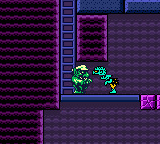
I was pleased that my appreciation of WL3 wasn't just nostalgia, it's a genuinely great game. It still has the WL2 problem of deliberately wasting your time as a punishment, but it's a reasonable consequence of the novel dynamics they've invested in Wario as a player character. As for his personality within the series, WL3 is a bit lacking in characterising Wario as the amusingly greedy, lazy, and mean weirdo we know and love. But the game in itself is so charming and tightly designed. The world map and consistently well-sprited environments gives this little music box world a great sense of place, and the complex web of unlocks and interactions seems to be just the shot in the arm that the series needed to justify this iterative follow-up to WL2. The next sequel followed about 18 months later, but before that: the cast of this game specifically infiltrates Dr. Mario 64!
5 notes
·
View notes
Text

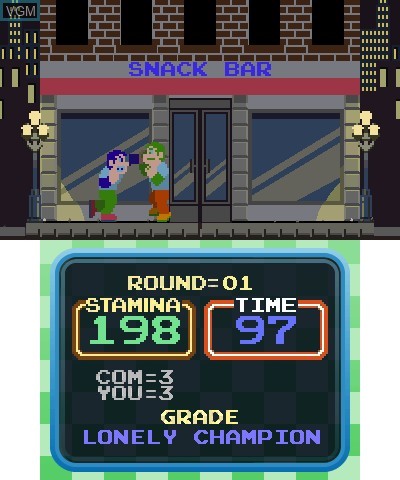
3D Classics: Urban Champion (Nintendo 3DS) / Urban Champion (NES)
Developed/Published by: Arika, Nintendo / Nintendo R&D 1, Nintendo
Released: 15/11/1985
Completed: 10/10/2023
Completion: 55 Rounds. “Downtown Champion.”
Trophies / Achievements: n/a
After playing Karateka and considering the other games that came out around the same time, I was struck by the fact that perhaps Nintendo’s most famous black-sheep black box, Urban Champion came out (if Internet-sourced release dates are to be trusted, which, as we all know, “ehh…”) about a month before Karateka did… and is also a side-scrolling one-on-one fighter???
Now, most people would quibble with my description of it as “side-scrolling” considering you actually have no control over that. The game is actually a succession of one-on-one fights with, er, the same opponent where you can move forward and back, punch and block high and low, and you’re just trying to push your opponent to the end of the screen. Do that three times and he falls down a manhole; if enemies push you back three screens, you fall down a manhole.
The reason I’m somewhat willing to call it a side-scroller is because the battles are over so quickly at times it feels pretty much as propulsive as Kung-Fu Master, never mind Karateka. The fighting is unbelievably simplistic and as a result there’s not really that much for the opponent AI to do, so you really just sort of wail away at them until you lose concentration like I did. I doubt that it’s been made significantly easier by Arika for 3DS or anything, and Nintendo have finally been shamed out of re-releasing this so it’s not even on Switch Online so I can’t compare against the original NES version, and I’m too scared to boot it up in an emulator in case I feel honor bound to play an entire round again and get stuck playing it as long as I already have.
Here’s what I’ll say for Urban Champion: It’s charming looking. The 3D Classics version is cute in that diorama-ey way 3DS games sometimes are (especially if you find the view mode that lets you see it in isometric profile–neat!) If someone else owns a copy (difficult considering it’s been delisted?) you can play it in local play with another player, which would probably be fun for a few minutes, or at least “something you could say you did.”
I can’t say this is Nintendo’s worst game, or even the worst black box release–the early sports games really are shite–because it’s responsive to play, but… it’s just bad, folks. Repetitive and boring and weirdly lacking in concept or spark. Perhaps it’s just multiple discovery gone badly wrong, but if in context they’d dressed this up properly as a side scroller with different enemies and some semblance of a plot, I’m pretty sure this would be fondly remembered now. But maybe they just ran out of time or didn’t care, who knows!
Will I ever play it again? I desperately wish I never do.
Final Thought: A Nintendo R&D1 joint, the internet claims, without as much veracity as I might hope, that this was designed by Makoto Kano, who would go on to write the scenario and design for Metroid of all things.
Support Every Game I’ve Finished on ko-fi! You can pick up a digital copy of exp. 2600, a zine featuring all-exclusive writing at my shop, or join as a supporter at just $1 a month and get articles like this a week early.
#gaming#video games#games#txt#text#review#nintendo#nintendo 3ds#3d classics#3ds#arika#nintendo r&d1#urban champion#3d classics: urban champion#1985
1 note
·
View note
Text
youtube
Classic Game of the Week: Mario Bros.
Developer: Nintendo R&D1 and Intelligent Systems (NES), Nintendo R&D2 - Atari, Inc. (2600, 5200), MISA (PC-8001), Choice Software (Amstrad CPC, ZX Spectrum), Ocean (Commodore 64), ITDC (Atari 7800), Sculptured Software (Atari 8-bit)
Publisher: Nintendo
Platform: Arcade, Atari 2600, Atari 5200, Atari 7800, Atari 8-bit, PC-88, FM-7, Commodore 64, NES, Amstrad CPC, ZX Spectrum, Game & Watch, Game Boy Advance
Video Courtesy of: TheUnmasterofGames
#classic game of the week#classic game#classic gaming#nintendo#8 bit#local plumbers#pipes#mario bros#mario#luigi#classic arcade#arcade game#Youtube
4 notes
·
View notes
Photo

Famicom Wars
Intelligent Systems got its start with programmer Toru Narihiro being tasked with porting games from Nintendo’s Famicom Disk System to the format compatible with the more widely used Nintendo Entertainment System’s for overseas production. Known primarily in the early years for developing software-creation-tools, both hardware and software, Intelligent Systems worked closely with Nintendo R&D1 and developed many games that were functionally hardware tech demos like Wild Gunman, Duck Hunt, and Gyromite. Before long, the effort became an offshoot company that was a branch of Nintendo. The drive to make something in a different direction was held, and so Narihiro along with Satoru Okada, Kenji Nishizawa and Gunpei Yokoi sought to develop a simulation game, and the change in direction for the joint-stock company began with Famicom Wars. The goal was to create a strategy game similar to SystemSoft’s Daisenryaku series, which originated on Japanese PCs, but adapted for the younger, wider audience of the Famicom.
Read more...
14 notes
·
View notes